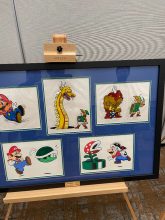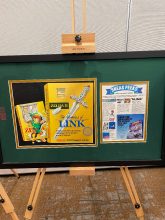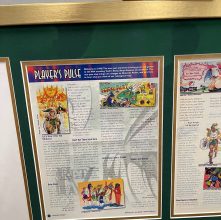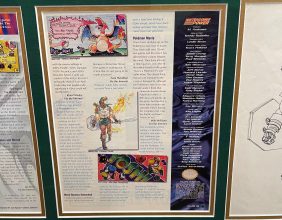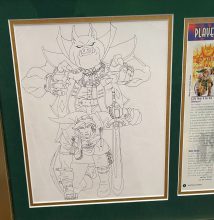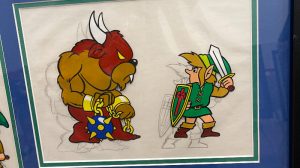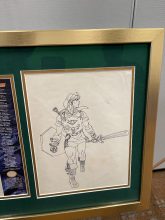PAX West 2023 Spotlight: The Art of Nintendo Power
Posted on September 03 2023 by David Lasby

One of the more unique exhibits at PAX West 2023 is the Art of Nintendo Power gallery. The exhibit features several dozen framed pages from a range of issues of Nintendo Power, part of a private collection from video game preservation advocate and gaming historian Stephan Reese, who started the non-profit Interactive Art Collection to assist with these endeavors. Getting a chance to chat with him as he personally guided us through the exhibits was a privilege I won’t soon forget.
Growing up, I regularly subscribed to Nintendo Power, the Nintendo of America magazine. I wish I could go back in time and make sure my collection didn’t get lost because they’ve become priceless artifacts of a bygone era. Sure, we still have gamer magazines like Game Informer and others, but nothing will ever match the anticipation and excitement of seeing that new issue of Nintendo Power show up in the mailbox.
Stephan Reese feels the same. In fact, he’s dedicated the last ten years to collecting and preserving rare issues of Nintendo Power, along with a large number of artifacts related to the production of the magazine. While his non-profit has only existed for the past three years, his passion for Nintendo spans a lifetime. Reese grew up in the 90s, playing both the NES and the SNES, though the latter was his passion. He takes his duty as a collector seriously, opting to transport his collection himself rather than having a delivery service or employees of the non-profit do so.
“If and when something inevitably happens, and pieces of my collection are lost or damaged, I’d rather that be on me than someone else,” Reese explained. Expanding on the value he places upon preserving Nintendo’s history, he notes, “I don’t want to donate the collection somewhere only to have it sitting in some warehouse. These pieces should be available to the public. I wish Nintendo would take the lead with this task, but they haven’t, so here I am.”
Reese provided a lot of insight into the production process as he gave us a tour. He explained that most images for Nintendo Power were actually redrawn by American artists rather than being sent over by the original artists in Japan. The reason for this, he explained, was that speed was prioritized above all else. Deadlines had to be met. So American artists would redraw or even trace images from the instruction manuals of games.
In other instances, 3D models would be completed only as far as the camera angle would cover; so the Mario Paint 3D model is half a Mario, left open on the side facing away from the camera. The final shot for the cover of the magazine gives the impression of a complete sculpture, but the actual model was not. Again, time was the most-valuable resource in Nintendo’s eyes.
Getting to see some of the original artwork for The Legend of Zelda and Zelda II: The Adventure of Link was special. It brought me back to an era when the franchise was less established, where character models could be imaginative and less defined. While I’m glad Zelda has become a household name, I do appreciate the sense of wonder and untold possibilities that the early years exuded. If you have a moment, check out the photos I took below.
Tell us what you think! Should Nintendo be doing more to preserve its history with Nintendo Power? Share your reactions in the comments below.
Sources: Interactive Art Collection, PAX West 2023

I’m a life-long fan of video games and have been playing since I got my NES in the 1980s. The Legend of Zelda, Super Smash Bros., Aliens, and Halo are some of my favorite game franchises. I write for several sites, including Zelda Dungeon, Boss Rush Network, and The Mighty. Find me on Twitter to check out my other content!



